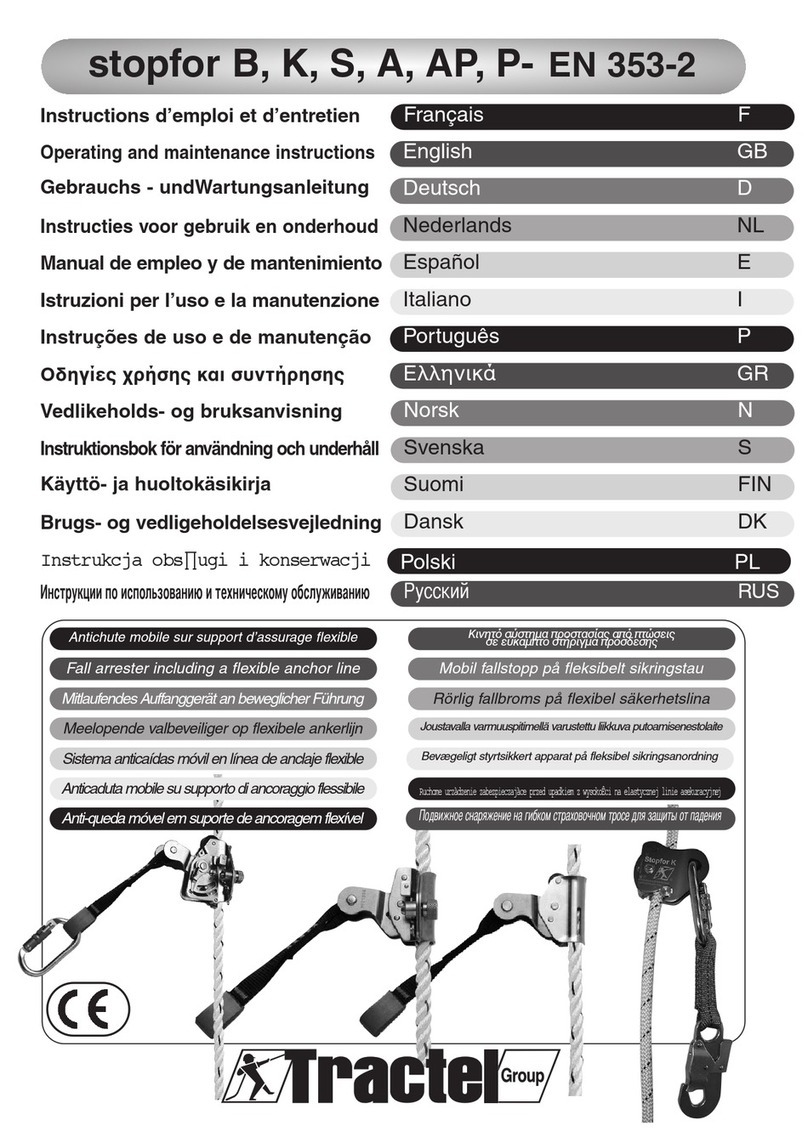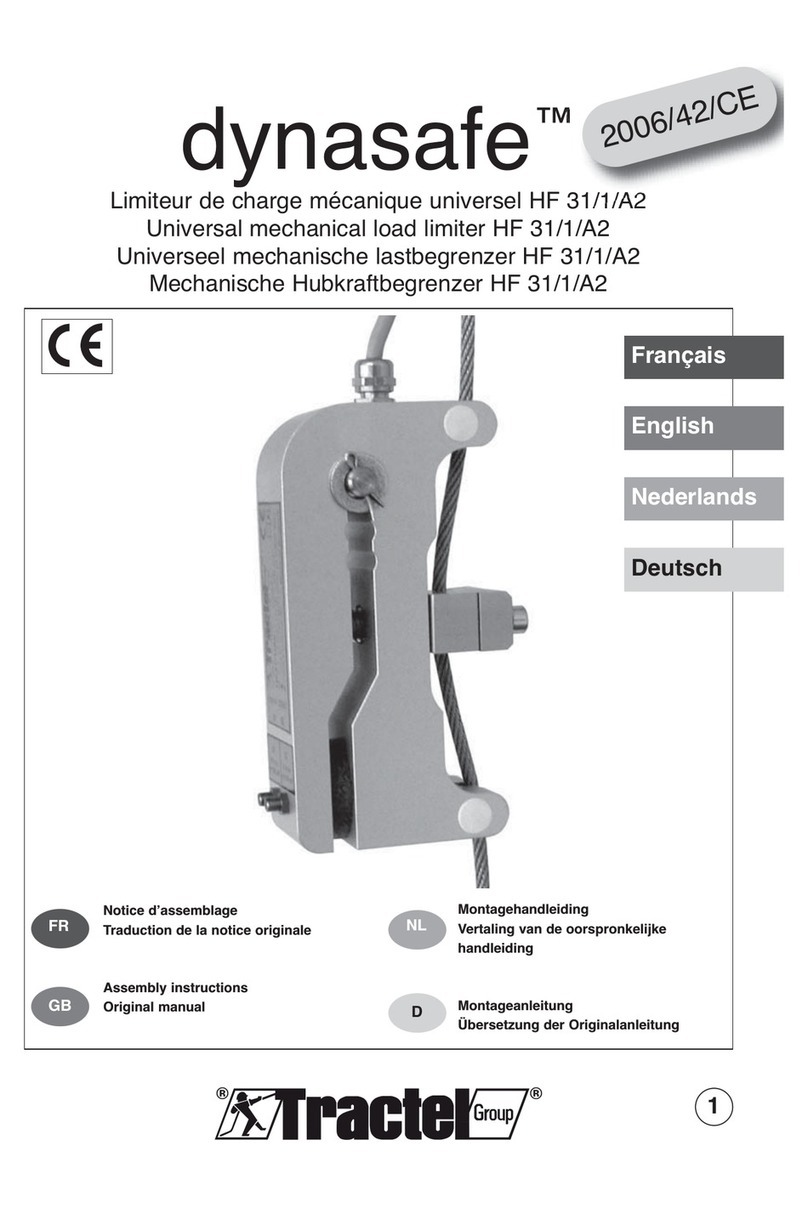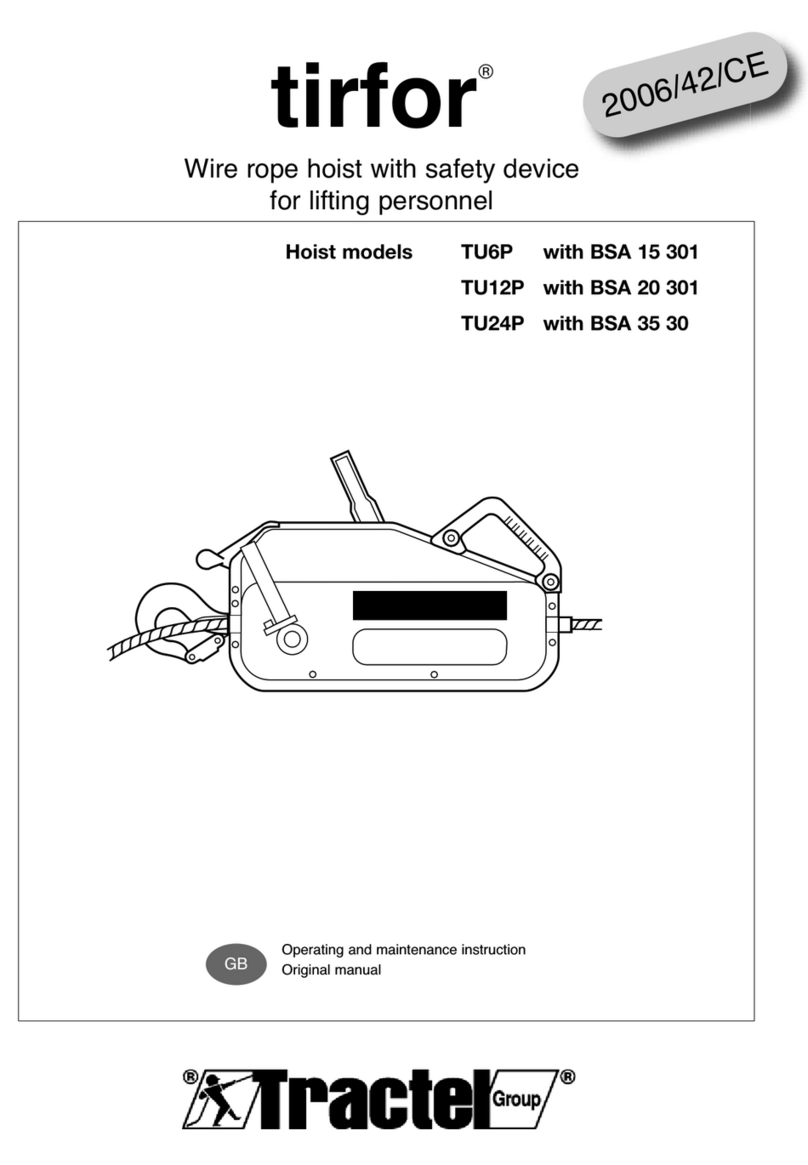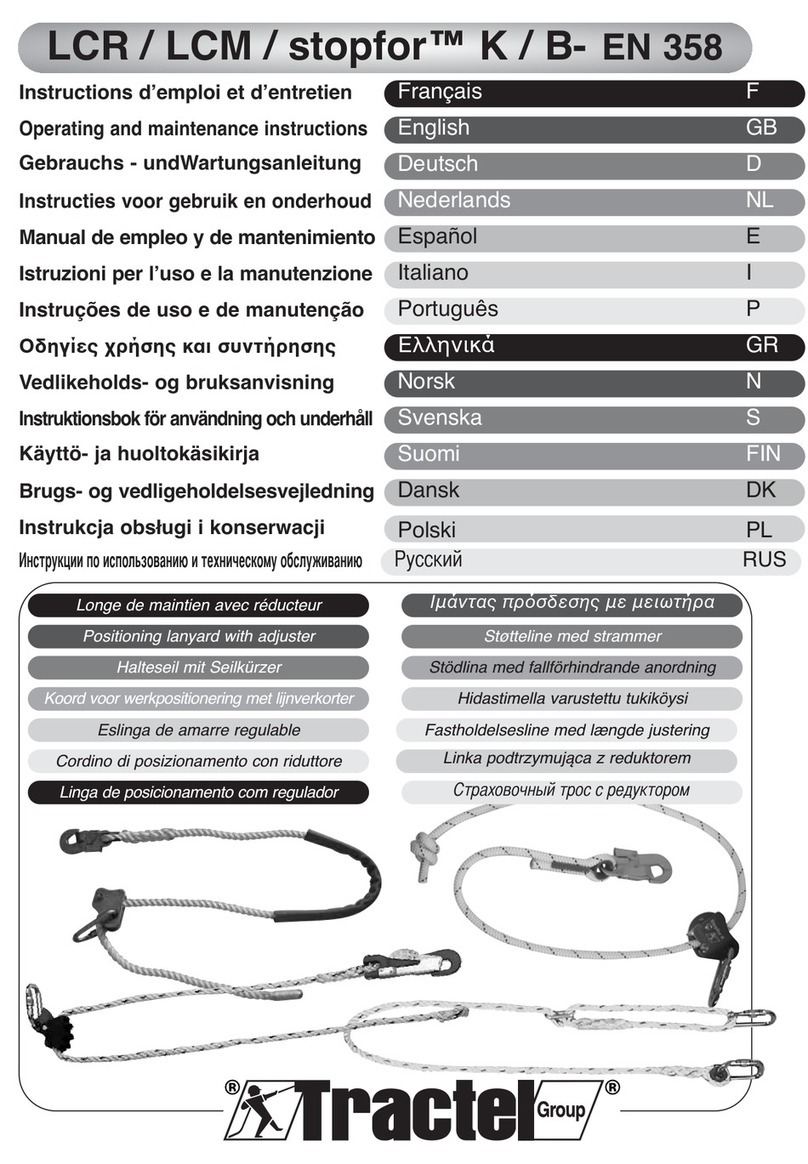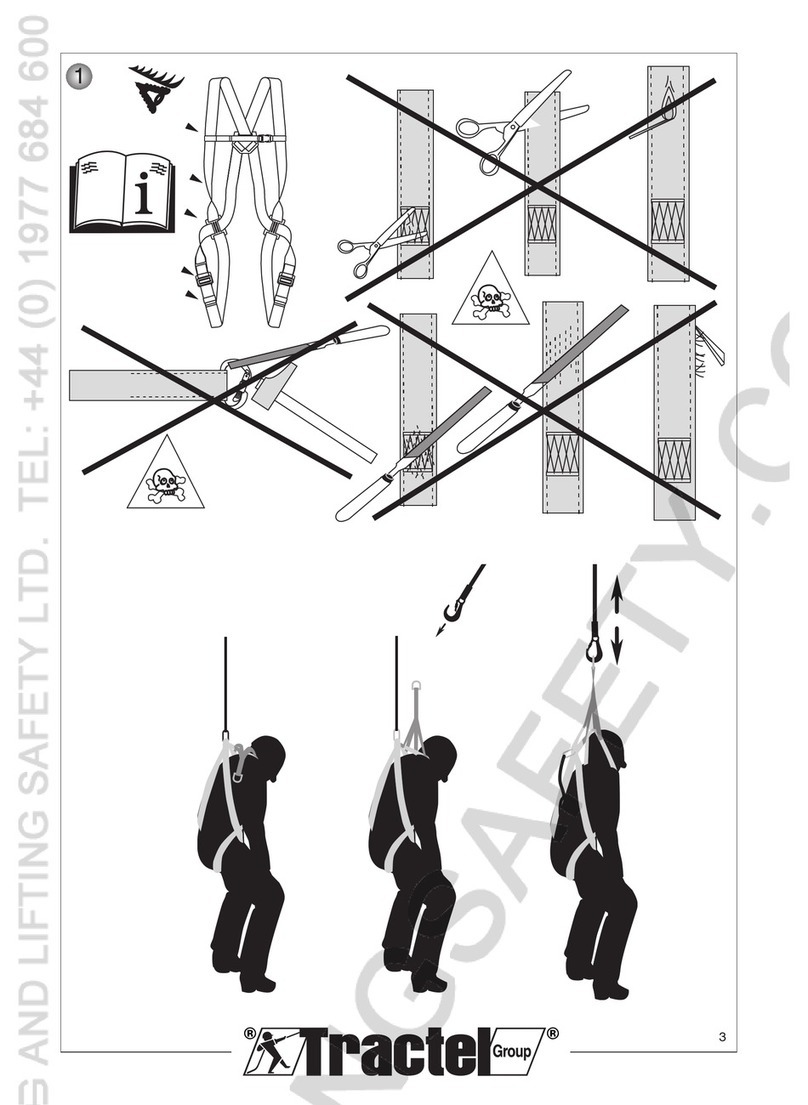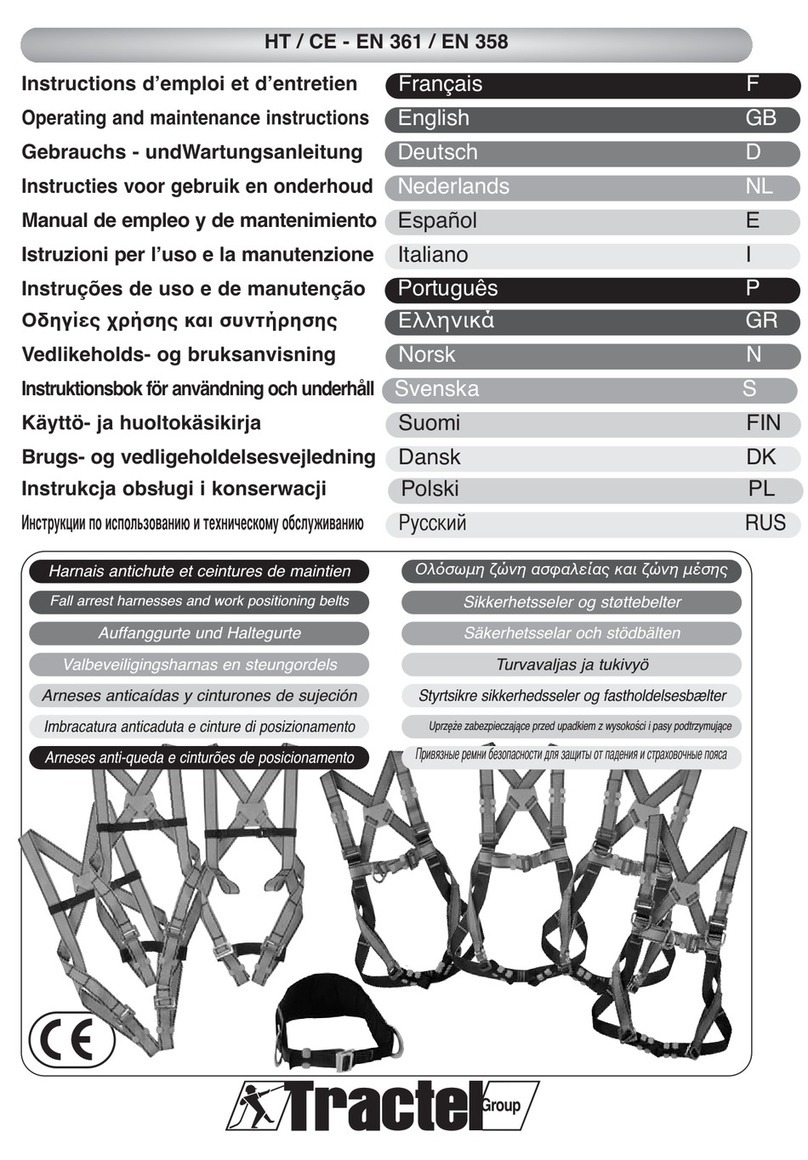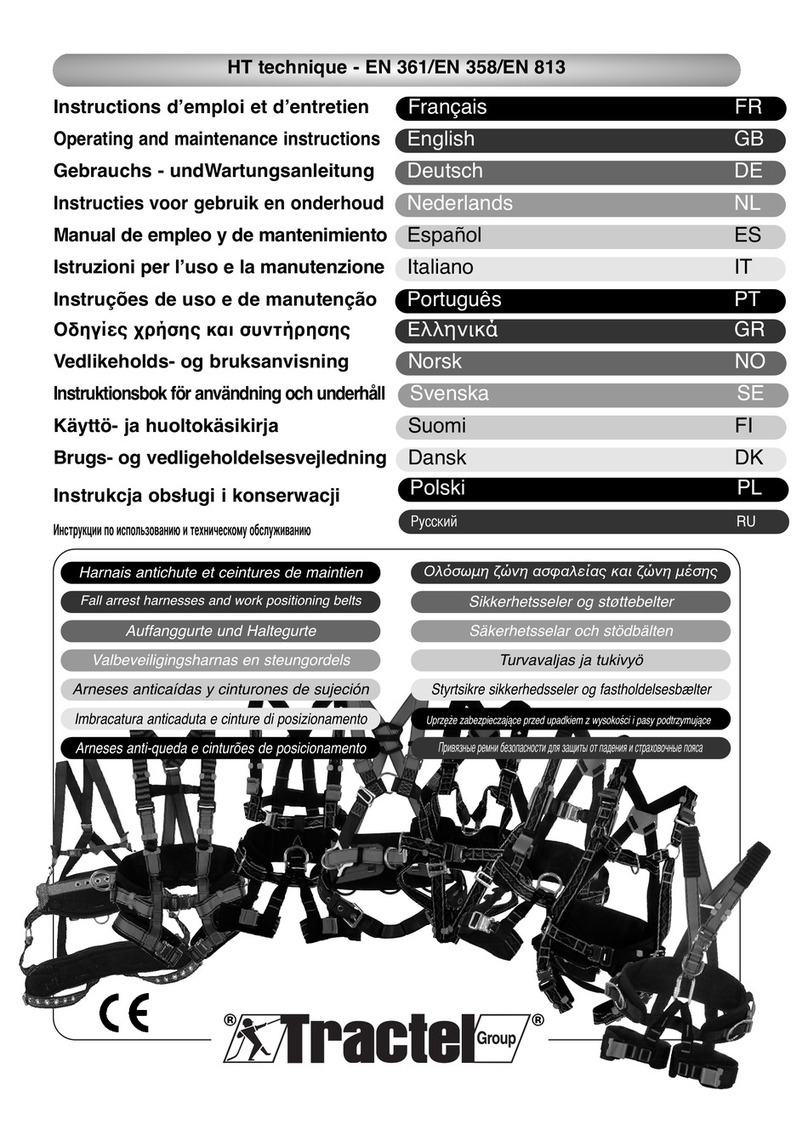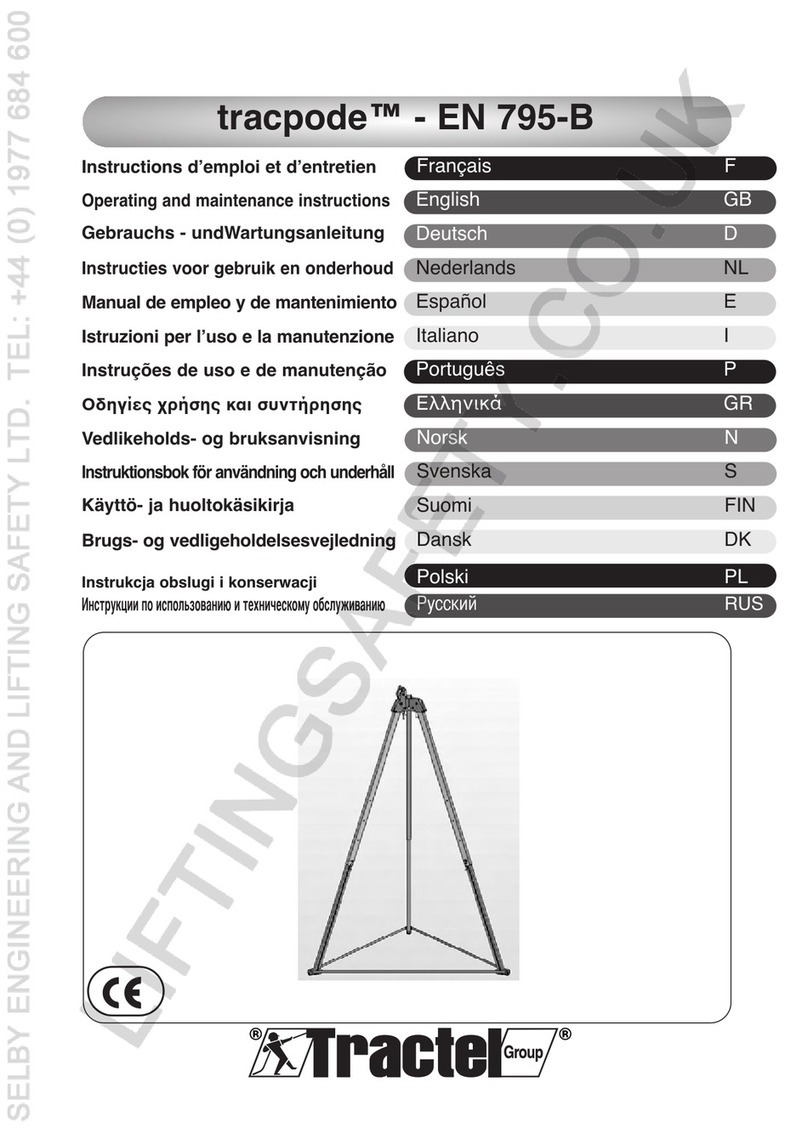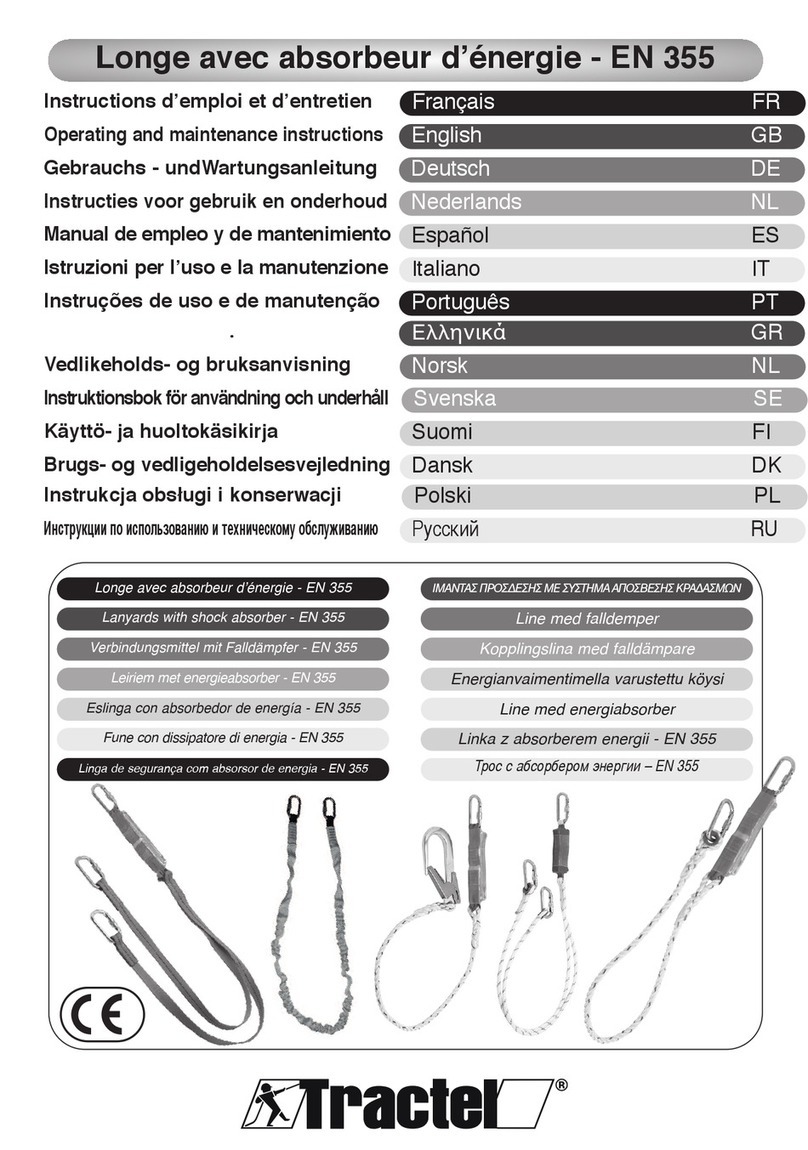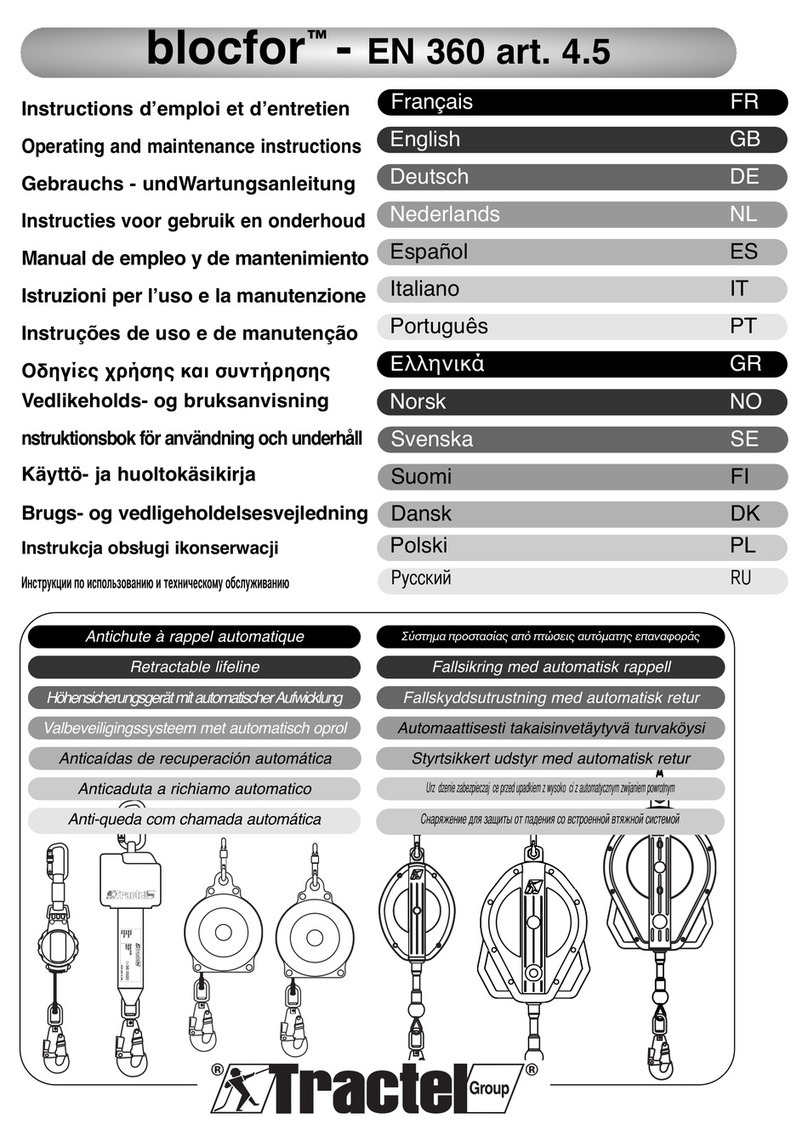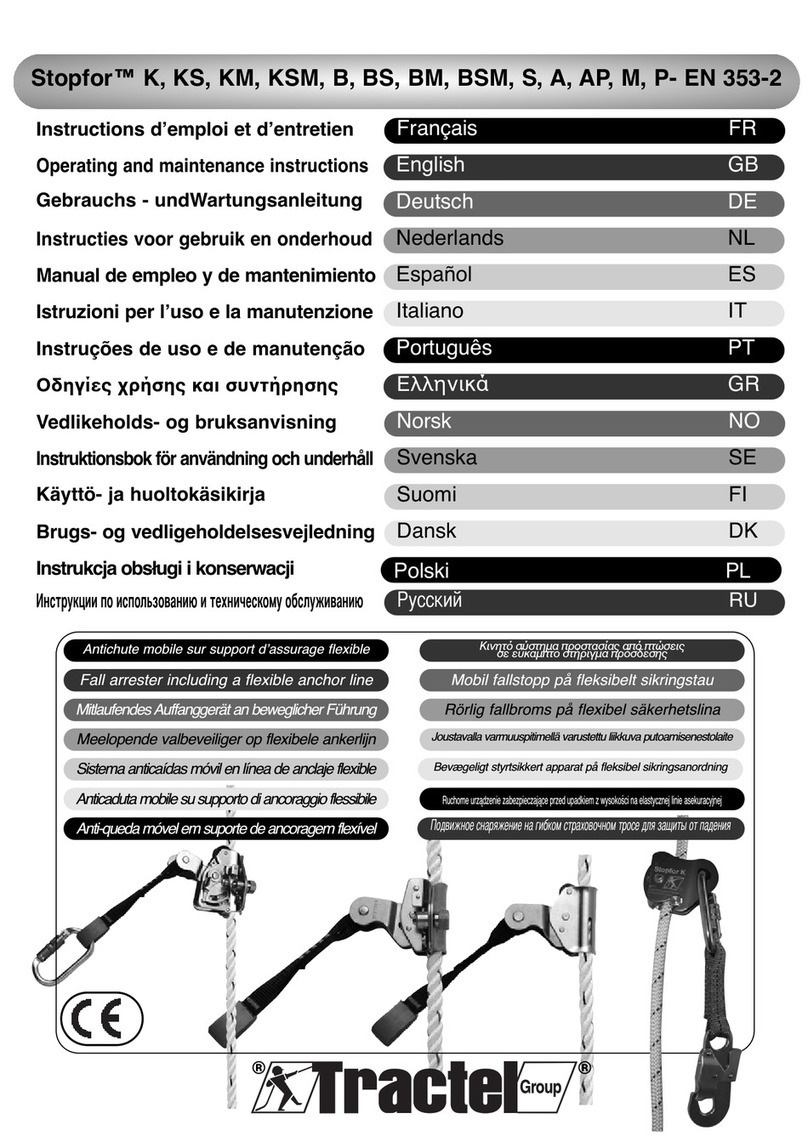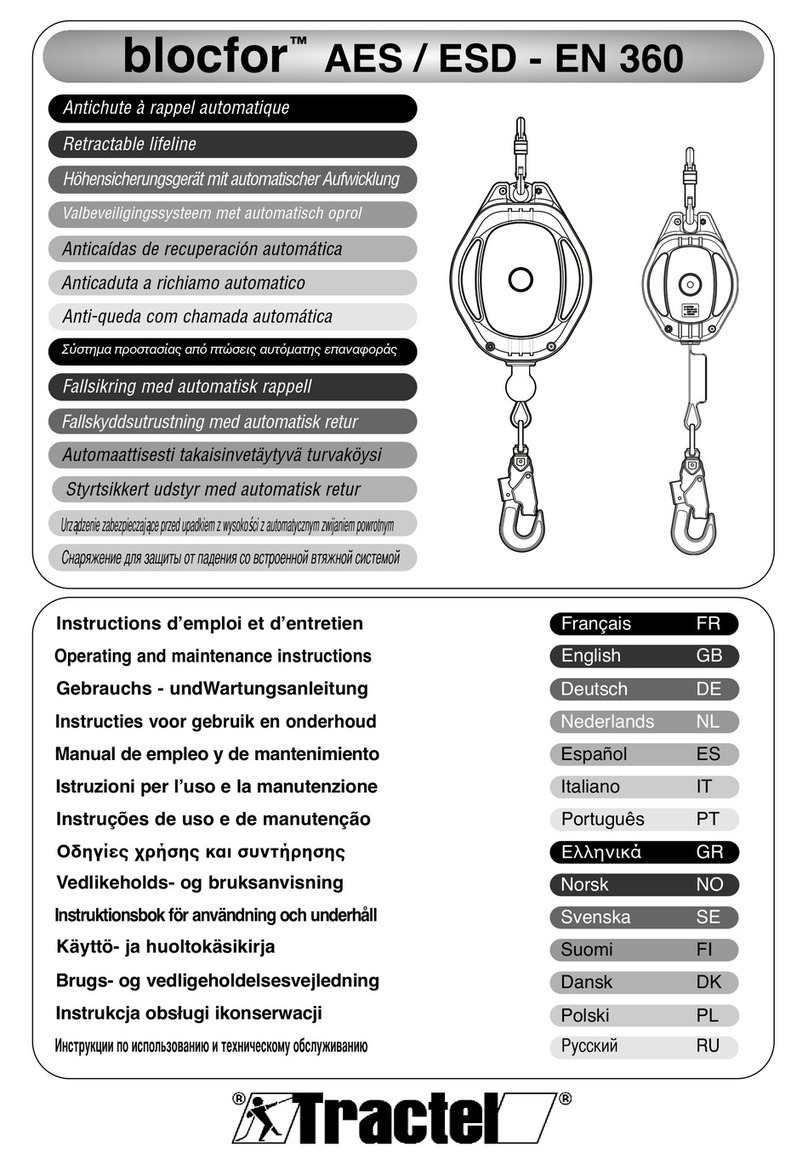
7
GB
• to use the blocfor™ self-retracting fall-arrester for
any other application other than for automatic fall
protection of operators.
• to secure the blocfor™ self-retracting fall-arrester by
any other means other than its anchor point.
• to use the blocfor™ self-retracting fall-arrester in
contradiction with the information specied in the
section “15. Life cycle”.
• to use the blocfor™ self-retracting fall-arrester as a fall
protection system for more than 1 operator.
• to use the blocfor™ self-retracting fall-arrester by
an operator whose weight, equipment included, is
greater than 150 kg.
• To use the blocfor™ self-retracting fall-arrester with a
load of between 100 kg and 150 kg (total weight of
the operator, equipment and tools) if any component
in the fall-arrest system has a lower maximum load.
• to use the blocfor™ self-retracting fall-arrester if it has
served to stop a fall.
• to use the blocfor™ self-retracting fall-arrester as a
means of suspension or to hold a work position.
• to use the blocfor™ self-retracting fall-arrester in a
highly corrosive or explosive atmosphere.
• to use the blocfor™ self-retracting fall-arrester outside
the temperature range specied in this manual.
• to use the blocfor™ self-retracting fall-arrester if the
fall clearance is not sufcient with respect to a falling
operator.
• to use the blocfor™ self-retracting fall-arrester if
any obstacle is located along the fall path or on the
swinging path when used in a horizontal congu ration.
• to use the blocfor™ self-retracting fall-arrester if you
are not in good physical condition.
• to use the blocfor™ self-retracting fall-arrester if you
are pregnant.
• to use the blocfor™ self-retracting fall-arrester if
the safety function of any of the associated items is
affected by the safety function of another item or may
interfere with it.
• to use the blocfor™ self-retracting fall-arrester if
the fall indicator on the M46 connector is activated
(gure3.d).
• to release the blocfor™ self-retracting fall-arrester
lanyard if it not is entirely wound in (gure 2.a).
• to use the blocfor™ self-retracting fall-arrester to
secure a materials load.
• to secure the blocfor™ self-retracting fall-arrester to
a structural anchor point with a strength less than
10 kN, or which may be assumed as such.
• to use the blocfor™ self-retracting fall-arrester for
vertical angles of over 20° (gure1.c).
• to use the blocfor™ self-retracting fall-arrester lanyard
as a means of slinging.
• to interfere with the alignment of the blocfor™ self-
retracting fall-arrester with respect to the lanyard.
• to interfere with free unwinding and winding of the
blocfor™ self-retracting fall-arrester lanyard.
• to perform any repair or maintenance operations
on the blocfor™ self-retracting fall-arrester without
rst having been trained and qualied, in writing, by
TRACTEL®(gure2.b).
• to use the blocfor™ self-retracting fall-arrester if it is
not complete, if it has been dismantled beforehand or
if components have been replaced by any person not
unauthorised by TRACTEL®.
• to use the blocfor™ self-retracting fall-arrester
horizontally if the radius of the edge (R Min) does not
comply with the technical specications table above,
or if there is presence of burrs.
• to use the blocfor™ self-retracting fall-arrester
horizontally if the distance between the anchor
point and the edge (L min) does not comply with the
technical specications table above.
• to use the blocfor™ self-retracting fall-arrester
horizontally if the maximum lateral displacement
distance perpendicular to the edge (M max) does not
comply with the technical specications table above.
• to use the blocfor™ self-retracting fall-arrester in a
horizontal conguration if a specic rescue plan has
not been set up beforehand.
• to use the blocfor™ 2 ESD self-retracting fall-arrester
in a horizontal conguration.
• to use the blocfor™ 1.8A ESD self-retracting fall-
arrester if the M47 connector secured to the end
of the energy absorber of the retractable lanyard
is connected to an anchor point, and if the upper
connector of the device is linked to an anchor point on
the fall-arrester harness.
• to use the blocfor™ 1.8B ESD self-retracting fall-
arrester if the M47 connector secured to the end
of the energy absorber of the retractable lanyard is
connected to an anchor point, and if the retractable
lanyard connector is linked to an anchor point on the
fall-arrester harness.
• to use the blocfor™ SR ESD self-retracting fall-
arrester in an environment where there is the risk of
sparks ying or the risk of a ame coming into contact
with the self-retracting fall-arrester’s synthetic rope.
8. Installation
• Insofar as possible, the structural anchorage point
should be located above the operator. The structural
anchor point must withhold a minimal resistance of
10 kN.
• The connection to the anchoring point or to the
structure must be done using an EN 362 connector.
• For the connection of the fall-arrest system to the fall-
arrest harness, refer to the instructions of the harness
and the fall-arrest system in order to use the proper
anchorage point and the proper attaching procedure.
blocfor™ R ESD self-retracting fall-arrester:
Please refer to the attached instructions specic to the
blocfor™ 20R and
30R ESD – EN 360 - EN 1496 class B Self-retracting
fall-arrester with lifting rescue device.

